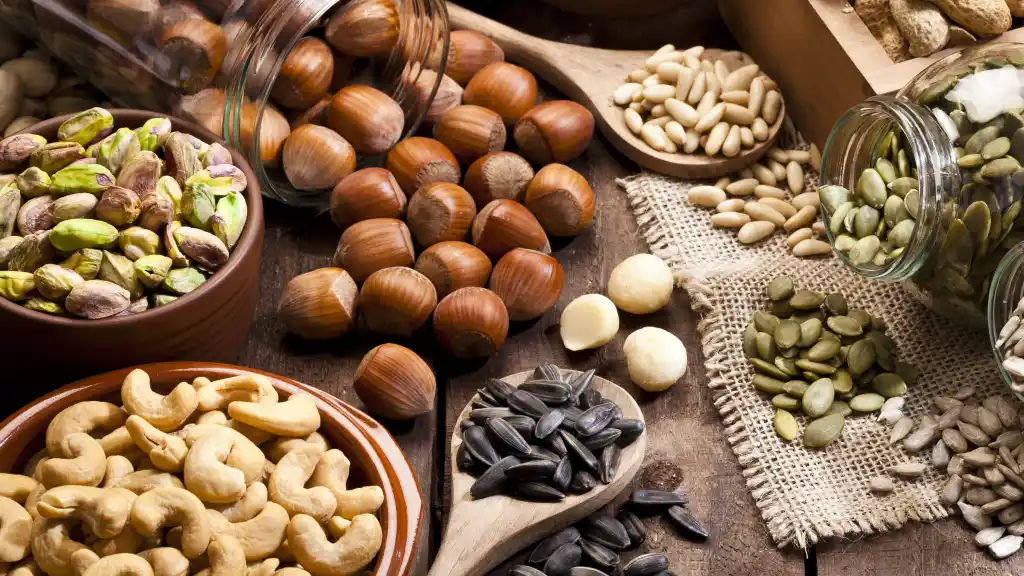Do you know how to capitalize on the high demand for nuts in the wholesale market? Buying and importing these products is a key process to maintain an attractive and optimized supply. Nuts like pistachios, peanuts, almonds, and walnuts are among the most sought-after products due to their flavor, versatility, and nutritional value. If you manage a wholesale business, mastering the acquisition and import process can boost your competitiveness in the food sector.
Graffoods connects leading food distributors with high-demand nuts, ensuring quality and compliance in every transaction. This article serves as a practical guide for those looking to secure a stable and reliable supply of nuts in bulk, meeting the expectations of a growing market.
Why Are High-Demand Nuts So Important?

The High-demand nuts are a crucial component of the food market, valued in both the snack sector and the culinary industry. Their nutritional value, which includes proteins, healthy fats, and antioxidants, makes them attractive to consumers and businesses seeking healthy and versatile options.
This segment includes products like almonds, pistachios, walnuts, and peanuts, which are highly consumed and adaptable to various uses in cooking and baking. Offering these products in bulk allows businesses to meet the needs of a market that values natural, accessible foods that align with trends ranging from healthy eating to gourmet ingredients.
How to Select Reliable Nut Suppliers
One of the first steps to ensuring the quality of your nut supply is selecting reliable suppliers. The choice of supplier impacts not only freshness but also traceability and overall product quality. At Graffoods, we work with suppliers evaluated based on their food safety practices, certifications, and transparency.
Key Factors to Consider in a Nut Supplier
- Quality certifications: Ensure the supplier holds international certifications that guarantee safe and transparent practices, such as HACCP, FDA, or ISO.
- Origin and traceability: Product traceability is essential to ensure quality at every point in the supply chain.
- Variety of offerings: Opt for suppliers that offer a wide range of nuts, from pistachios and almonds to less common options, to meet your customers’ preferences.
Choosing the right suppliers optimizes your high-demand nut import process, reducing risks and ensuring that every delivery meets the expected standards.

What Are the Most Popular Nuts in the Market?
Understanding the most popular nuts in the market will allow you to optimize your supply and better meet customer needs. Here’s a list of the products that generate the most interest among consumers:
1. Pistachios

Pistachios are highly valued for their mild flavor and unique texture. They can be offered in various forms, such as salted or unsalted, and in ready-to-eat formats.
2. Peanuts

Versatile and affordable, peanuts are a popular choice in the nut market. They are in high demand both as a healthy snack and for use in peanut butter and other derived products.
3. Almonds

Almonds stand out for their high protein content and healthy fats. They are highly versatile and used in various products, from almond milk and butter to baked goods.
4. Walnuts

Walnuts are a premium product in the nut market, valued for their antioxidant benefits and flavor. They have a wide range of applications in the culinary industry.
How to Import High-Demand Nuts: Key Steps
Importing High-demand nuts can be a complex process but is highly profitable when done correctly. Here are some key steps for a successful import and inventory optimization:
Step 1: Market Research
Before importing, research nut preferences and consumption trends in your region. Knowing which products are in high demand will help you make more informed purchasing decisions and adjust your nut supply accordingly..
Step 2: Comply with Import Regulations
Each country has its own regulations for food importation. Ensure you have all the necessary permits and comply with food safety regulations. This includes both documentation and sanitary inspections.
Step 3: Choose the Right Transportation
Select between sea or air transport based on your inventory needs and delivery timelines. Air transport is faster, while sea freight is suitable for large volumes.
Step 4: Store Nuts Properly
Proper storage is key to maintaining nut quality. Ensure you have a storage system that controls temperature and humidity, which is vital to preserving the freshness of the product.
Optimizing Your Nut Supply for the Wholesale Market
Optimizing your quality of your nut supply involves maintaining a diverse inventory tailored to your target market’s demand. Here are some tips to achieve a profitable and balanced supply:
- Ensure a variety of products: Customers look for a wide range of nuts, from popular products to less common options.
- Adapt packaging formats: Consider offering nuts in bulk or in specific retail packaging tailored to your wholesale client’s needs.
- Monitor inventory based on demand: Track sales and adjust your orders according to product turnover.
Conclusion: Capitalize on High-Demand Nuts with Graffoods
Importing High-demand nuts is a profitable opportunity for wholesalers looking to supply customers with high-standard foods. By choosing to work with Graffoods, you gain access to a network of international suppliers, fresh products, and fully traceable origins. Explore our online catalog to discover our full range of most popular nuts in the market and secure top-quality products for your customers.

